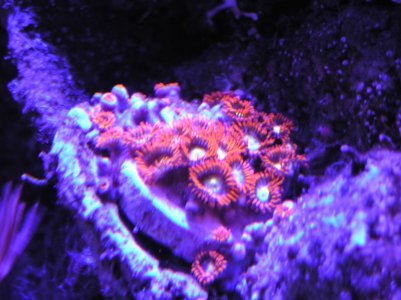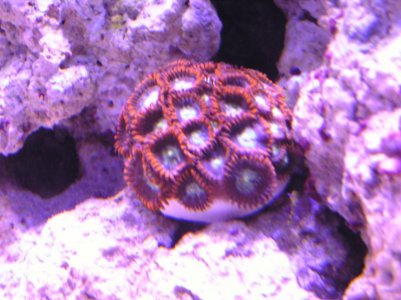Well, in general, the cleaner the system, the better for the organisms. There are many meanings for "too clean" or "too dirty", so therefore there isn't any rule of thumb for that.
The water changes, when done right, shouldn't hurt the system.
It is for the best.
If they aren't done right they can make things worse. Excess of water changes is the most common mistake people do. 10% at a time is a good rule of thumb. Changing water too often and/or too fast is not good either. That we know...
Some times dipping can aggravate a situation too.
It is good to know what to dip the colony for and how, so it's ability to recover doesn't get compromised.
Looking for predators at night could help, yes. I'm assuming there are no predators and I'm jumping for the next possibility.
I would say the next step after trying water changes for 2 weeks would be to treat for bacterial infection. If colony looks ugly or worse after the first try with the water changes just dip it, 'cause it's probably bacteria.
I've had some species of zoanthids that were "melting away" and actually it was a need for food particles. Small zoanthids from "rich nutrient" waters are susceptible to that. So...
I've had some hard to find blue zoanthids species that couldn't survive more than 24hours after carefully collected, transported and acclimated to a very well mature and maintained system, melting so fast! So some species are more vulnerable to melting than others.
This is a well know problem with some of the blue species.
Some fishes like to graze on algae close to the polyps and they close for a long while. They can "melt" after so long without opening. That "melting" is to get weak and with skinny bases.
There are different types of "melting". Some times the zoas look like melting and they are actually closed, but their growth is stretched. So it looks like melting, but they are only closed. Some times they stop growing like that and begin to die too. Flesh looks healthy but they are weak.
Some other times they can come back to normal and do fine.
Some times they melt away and smells terrible. That's bacteria infection. Normally they just close and turn brown or have a white film on them.
One of the reasons I feed my zoas is because I've noticed that the have almost no issues with any type of melting when feed periodically. Their flesh looks stronger and their polyps' response to food keep them vivid, I guess.
Another good tip is the water movement. The better the flow, the less melting in the system. Too much flow for long time is not so good! Just the right amount where they can gently move and get their metabolism going with gas exchange and nutrients' absorption in check. Some few species do appreciate stronger flow then others.
Lots of other possibilities for melting too...
Any pictures?
People would love to see the pictures, I'm sure.
It helps them to help you.
When they see the pictures they remember the problem they had in the past and will be glad to help you. :thumbsup:
Hope others can post their experiences with melting, please.
I would like to learn more about that!
Once more, good luck!
Grandis.


